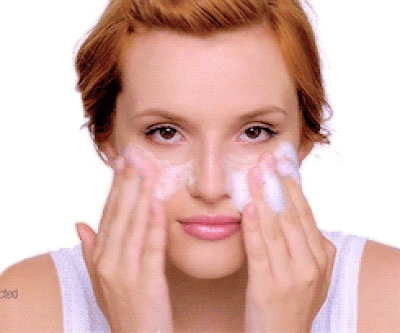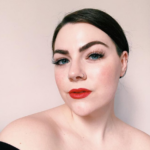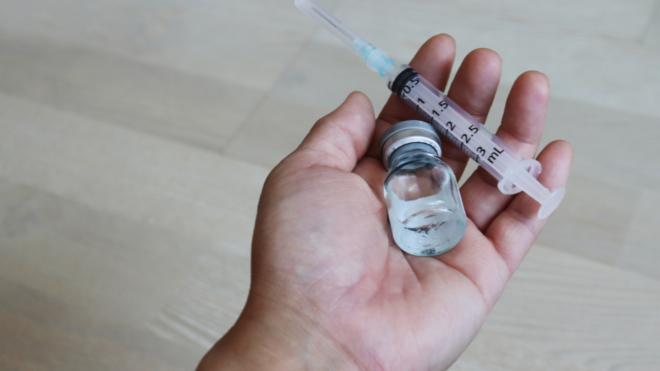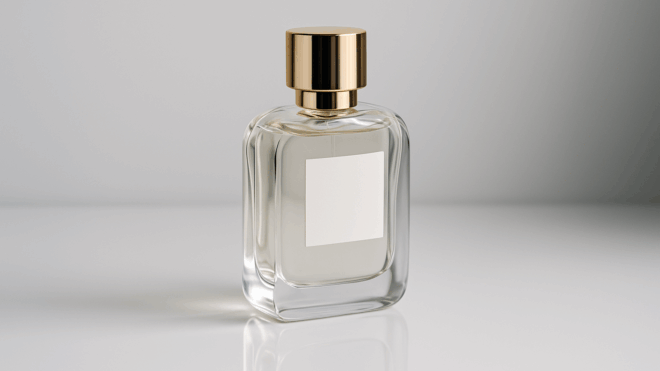Let me preface this story by clarifying that I am not a dermatologist or an esthetician — that being said, I am a beauty editor who's tried countless products, done tireless research on skin care, and interviewed a significant amount of qualified beauty professionals who know more about the topic than I do.
Because of this, I've got my skin-care routine down to an exact science. I've now been using my current routine for long enough (and consistently enough) that my skin I are now more than ever feeling truly in sync. My breakouts come less often, my puffiness and redness are slowly but surely calming, and I'm finally experiencing that natural dew I've always envied on people with flawless skin.
I won't lie — I accredit most of this to pure genetics. But a few miracle products, time slash dedication, and a whole lot of experimentation has surely made a recent difference (I can tell because I'm fielding more questions about my skin than ever). And to answer all those burning questions, I've rounded up a complete list of the products and methods I use to take care of my skin.
First let's talk about my skin type because what works for me might not work for everyone.

I have what most would consider "normal" skin — it gets dryer in the winter and oilier in the summer. I keep my routine extremely simple and consistent throughout much of the year save for my moisturizer (light formulas for warm weather, thick formulas for cold).
I don't nor have I ever had severe or cystic acne. When I do breakout, I get large, deep pimples that mostly stay secluded to my chin and sometimes nose. If I get spots anywhere else, I know I'm imbalanced hormonally or need to clean my phone/pillowcases.
If you have a significant amount of acne or scarring to treat, I highly suggest starting your skin journey by seeing a dermatologist or at the very least getting a facial with an esthetician (either can pinpoint your issues and suggest medication or other treatments if necessary).
My first step, if I'm wearing any kind of mascara or other hard-to-remove makeup, is to use an oil-based cleanser.
Although I've always known I had a need for them, I used to avoid cleansing oils and balms because a.) I was afraid they would make my skin oiler and b.) I thought they were too expensive. Neither are true!
Pond's Cleansing Oil ($12, Walmart) doesn't break the bank, and just a small dollop easily swipes off all the long-wear makeup I'm wearing on any given night. And no, it does not affect my skin's oiliness because I always follow it up with a second cleanser.
After I've removed any and all makeup, I move on to a gentle cleanser.
When I'm raiding my friends' skin-care collections, the thing I notice most is that they're using cleansers that are way too astringent. Picking the right cleanser, I think, is the make-or-break part of a routine because it's base on top of which you'll layer all your other products.
If your skin feels "squeaky clean" after you wash your face, that means your cleanser is stripping not just the dirt out of your skin, but also the natural oils it needs to retain moisture and stay plump. (It also might mean the water you're using is too hot.) When you strip away too much oil from your pores, your skin will start to overproduce oil to compensate, and that can cause extra oiliness, unwanted shininess, and clogged pores that lead to breakouts.
I stick to gentler cleanser for this reason. Kiehl's Ultra Facial Cleanser ($20, Sephora) and Ole Henriksen the Clean Truth Foaming Cleanser ($30, Sephora) are my two tried-and-trues. I always make sure to massage them into my skin for at least a minute at a time to promote blood circulation.
Then, I proceed to the only product I can truly say literally transformed my skin: A chemically exfoliating AHA toner.
I know some of the products I use are on the pricier side (a privilege of being a beauty editor: review samples), but if there's one high-end product I absolutely urge you to buy and use religiously, it's Ole Henriksen's GLow2OH Dark Spot Toner ($28, Sephora). I use it every single morning and every single night immediately after I wash and dry my face.
This toner breaks down excess oil, targets dark spots, and generally brightens skin thanks to magical ingredients called poly alpha hydroxy acids — which are usually called AHAs on skin-care labels (look out for those in general, they're life changing).
AHAs naturally exfoliate skin and remove dead skin cells, which means if you use this daily, you will rarely feel the need to use a harsh sugar-based face scrub ever again. You can find these ingredients in cleansers, serums, and moisturizers too.
For added brightness, I follow up my toner with a choice drugstore pick: a Sweet Chef serum.
As you can probably tell by now, fighting dullness and uneven skin tone is the primary goal of my skin routine. I pat the Sweet Chef Ginger + Vitamin C Serum Shot ($20, Target), which I sometimes combine with other Sweet Chef serums, into my skin post-toner for even more moisture and a glass-like skin finish.
At night time only, I follow up my serum with a retinol.
Retinol is an ingredient traditionally known for anti-aging purposes. I don't show any signs of aging just yet (nor do I really care if I do); I mostly use retinol as a tool for fighting and preventing acne scars. I'm rather new to retinol, which is why I love the Elizabeth Arden Retinol Ceramide Capsules ($48, Macy's).
When used too heavily or too frequently, retinol can cause serious irritation, especially to sensitive skin. These tiny capsules help me use the exact amount my skin needs so I never overdo it and cause unexpected irritation, redness, or damage.
Finally, I seal everything off with any moisturizer I know will seep into my skin quickly.
I used to swear by Clinique's gel-based moisturizer until I realized Neutrogena's Hydro Boost Water Gel ($23, Ulta) is almost the same exact thing at less than half the price. My other favorites include Glow Recipe Watermelon Pink Juice ($39, Sephora) and IT Cosmetics Confidence In A Cream ($48, Ulta).
They key to picking the moisturizer that's right for you is observing how quickly your skin is willing to absorb it. If you don't moisturize frequently because you don't like the feeling of that substance sitting on top of your skin, it's time to switch products.
A quality moisturize is always, always, always the final step to my skin routine both in the morning before makeup and at night. It acts as a sealant for all those other products used and makes sure they get a good day's (or night's) work in.
As far as additional stuff like face masks, scrubs, rollers, and spot treatments go? I use some here and there but urge you not to rely on them.

If I have a big date or a photoshoot or any major event that requires an extra smooth canvas for makeup, I use Lush's Don't Look At Me exfoliating face mask ($14, Lush) after I cleanse and before I tone. If an unexpected pimple pops up, I apply Dermalogica Breakout Clearing Spot Treatment ($21, Sephora) to it directly before I moisturize at night. On days my eyes are particularly puffy, I'll chill an eye mask in the fridge and before I let it sit underneath my eyes for 15 minutes.
That being said, I think having a consistent routine with the right products prevents me from needing to use any extra bells or whistles. You can use face masks too often — I limit my use to once a week so as not to overwhelm my skin with too many changes. I also especially avoid overusing any charcoal-based masks that aim to clear pores — like some cleaners, those also tend to strip skin too dry and cause excessive oil production.
Oh, and do I avoid certain foods for the sake of my skin? Personally, not really — but it's still important to know what your triggers are.
Some skin-care experts recommend their acne-prone clients cut down on dairy (especially cheese) as an added measure to prevent acne. I luckily have never felt the need to this (again, genetics have offered me an upper hand on that front), but I have experienced chin breakouts in the days following a cheese overdose.
Higher on my priority list? Salt. As a makeup artist once told me, salt causes the water molecules in the skin to bind, causing large puffs underneath the eyes. I know I've eaten too much salt or dehydrated myself when I get really, really puffy — that's the point at which I might try to cut down, but I never let it affect my diet in any major way. NOTHING will keep me from my french fries.
Keeping a consistent routine and sticking with it for a long time gives you a solid "control setting" that makes it easier for you to pinpoint changes that trigger skin changes for you. When you know your products aren't the problem, it's easier to figure out what recent changes you've made that might be affecting you.
All in all, the best thing I can tell you to do is be consistent with your routine — and to give it time to work.

Skin does not, will not, and cannot change overnight. Products need to be used frequently and for at least a couple of months before their visual effects really begin to occur. I use the routine I just listed out twice a day every single day without fail. Simply having patience, listening to your body, and doing research about your skin concerns and how to treat them make a huge difference.
And never forget that skin is extremely subjective! What works for one person likely will not for another — and some conditions require medication prescribed by a professional. A single consultation with a dermatologist might give you better insight into what you need.




